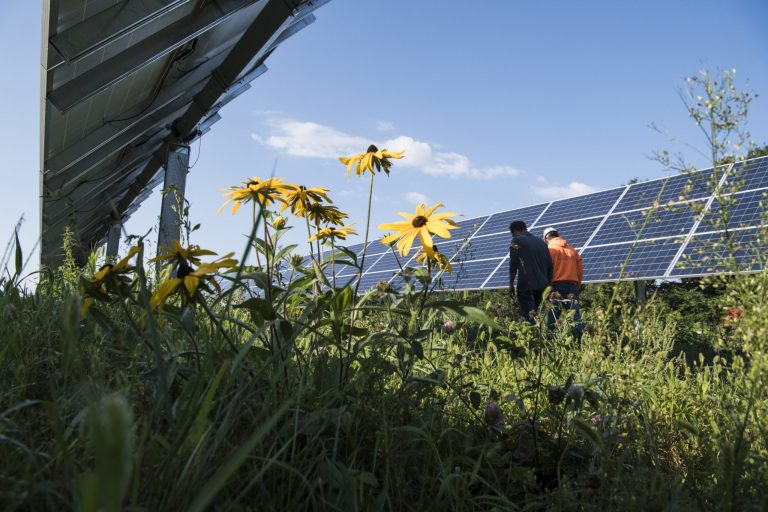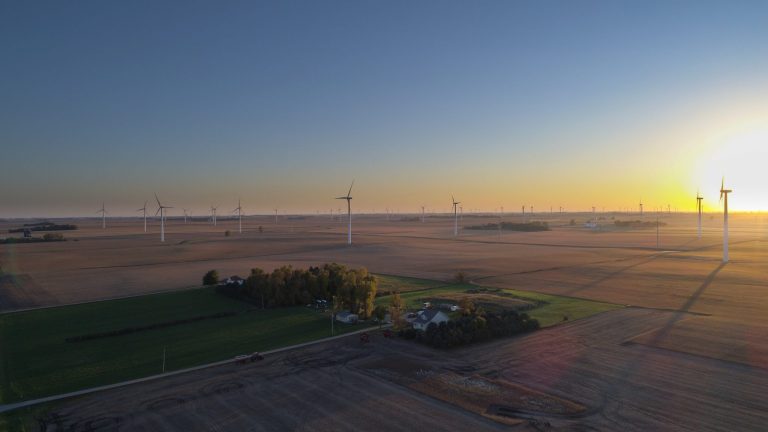Last updated October 2022
On Monday, October 18, 2021, the McKnight Foundation announced a commitment to achieve net zero greenhouse gas emissions across its $3 billion endowment by 2050 at the latest, and in 2022 we shared a progress report on our first year of learning and action. So what does net zero mean, and why are we pursuing it? We answer this and several other questions here.
How do you define net zero?
- Net zero is a comprehensive strategy to immediately reduce greenhouse gas emissions across the entire investment portfolio—including the fossil fuel sector—while also making new investments to build a carbon-free economy.
- This rigorous approach requires scouring every corner of the endowment for emissions, discontinuing investments in high-emitters, such as fossil fuel investments, working with our more than 75 fund managers to decarbonize their holdings, and regularly communicating our progress.
What motivated McKnight to commit to net zero?
McKnight’s commitment comes at a time when people across the globe are experiencing first-hand the devastating impacts of climate change and scientists agree that we must take dramatic action to limit global warming to 1.5°C by 2050.
This approach to eliminate our emission impact across our portfolio means that we are employing the vast majority of our considerable investment resources in the effort to avoid the worst impacts of climate change.
Why is this a big deal?
McKnight and other institutional investors have power to create change when we invest. Businesses are the innovators, and investors are the economic engine, that will finance the shift to a clean energy economy. As money flows toward climate-friendly investments and away from heavy-emitters, we will accelerate the transition to a low-carbon economy.
If you want to address the climate crisis, why doesn’t McKnight act sooner to transform its investment portfolio?
We have acted already. Our net zero commitment is strong because it builds on a proven track record of climate investing:
- 2013: Measured and began reducing carbon intensity of public portfolio.
- 2014: Launched impact investing program with 10% of endowment earmarked for high impact investments, and sold coal from fixed income portfolio. With a $100 million investment, created a Carbon Efficiency Strategy fund with Mellon (formerly Mellon Capital Management) to under index for high emitting companies and over index for low emitting companies.
- 2015: Joined Climate 100+ where some of the world’s largest investors push the 100 largest corporate emitters to set aggressive, science-based targets.
- 2017: Discontinued investments in companies with coal and oil sands reserves held by separately managed account managers.
- 2019: Determined all real asset investments must have credible sustainability thesis.
- 2021: Over 40% of endowment has mission alignment and $500 million is invested in a climate solutions portfolio.
2050 is far away, why can’t you do it sooner?
We couldn’t agree more that the need to act is absolutely urgent. McKnight’s is aiming toward a material reduction by 2030 as part of our interim target setting. And let’s be clear, we have been and will continue to decarbonize our endowment as rapidly as possible—and are urging our peers to do the same.
We’re proud that we’ve already halted investments in companies with coal and oil sands reserves, invested $500 million in climate solutions, and aligned over 40% of our endowment with our mission. Our foot is firmly on the accelerator to make rapid progress, and we will report back as we reach critical milestones.
How does net zero compare to divestment?
There are multiple strategies to reduce emissions in an endowment. Divestment looks specifically at the fossil fuel sector. Net zero is a more comprehensive approach not only to discontinue fossil fuel investments, but to go further by reducing emissions across all sectors in our portfolio.
Many sectors produce carbon emissions, and a net zero approach favors investing in companies that produce less, especially in comparison to what’s technologically possible. That said, it also requires a careful look at the nature of the emissions. For example, an electric bus manufacturer may look more carbon intensive on paper, but mass transit is an important part of the solution set. For McKnight, net zero is not just a bean-counting exercise, it is about advancing real world solutions to climate change.
How will you measure greenhouse gas emissions in your portfolio?
McKnight has a good understanding of the emissions in our public market investments now, and we are still working to measure across our private portfolio; by design these funds are less transparent. We are working with Mercer to create a baseline assessment. As of year-end 2021, the McKnight portfolio is 24% less intensive than global equities. This analysis covers over 70% of the endowment, and we’re hopeful to have near 100% by the end of 2022. We learned that our main drivers of portfolio emissions come from utilities, airlines, and materials, and that our public equity’s most intense emission assets weigh 0.6% in market value but account for 21% of carbon intensity. Our next step after we get comprehensive data will be to set ambitious interim targets.
Are there any tradeoffs that come with a net zero commitment?
The key tradeoff is that we will need to let go of high-emitting investments and associated fund managers which will contribute to underperformance in certain market conditions. However, shedding elements of our portfolio with increasing long-term risk will set McKnight up to take advantage of this energy transition and continue to be excellent stewards of our endowment.
What is an example of climate-forward investment McKnight has made?
With a $100 million investment in 2014, McKnight partnered with Mellon to create a broad Carbon Efficiency Strategy fund that puts fewer dollars in carbon-polluting firms and more in companies that are carbon-efficient. With about 1,000 holdings, the fund reduces the carbon intensity of its portfolio by 50% compared with its benchmark, all while outperforming the benchmark financially over its eight years investing. A win-win.
You can see other examples on our online directory of investments.
Why aren’t more foundations committing to net zero?
We were honored to be the second U.S. foundation to commit to net zero, after the David Rockefeller Fund, which was an important resource to us. We also applaud the Russell Family Foundation for making a net zero commitment in October 2022. To date, we remain the largest U.S. foundation to pursue net zero.
Consulting with larger endowments and asset owners—pension funds like CalSTRS and CalPERS and academic institutions like Harvard and University of Michigan—provided comfort that we were well-positioned for net zero. Today we are serving as a similar resource, advisor, and collaborator to other U.S. foundations. As with impact investing, we believe our experience and transparency will be useful to others that are wrestling with how this moment calls us to act.
Some of the tools asset owners need to achieve net zero require further refinement, and while boards and investment committees can set a north star to net zero, none of us know exactly how it will play out. We do know that measurement, transparency, Scope 3 accounting, offsets, and even the expectations for net zero endowments will evolve over time. We expect to see more foundations making net zero commitments in the months and years to come.


